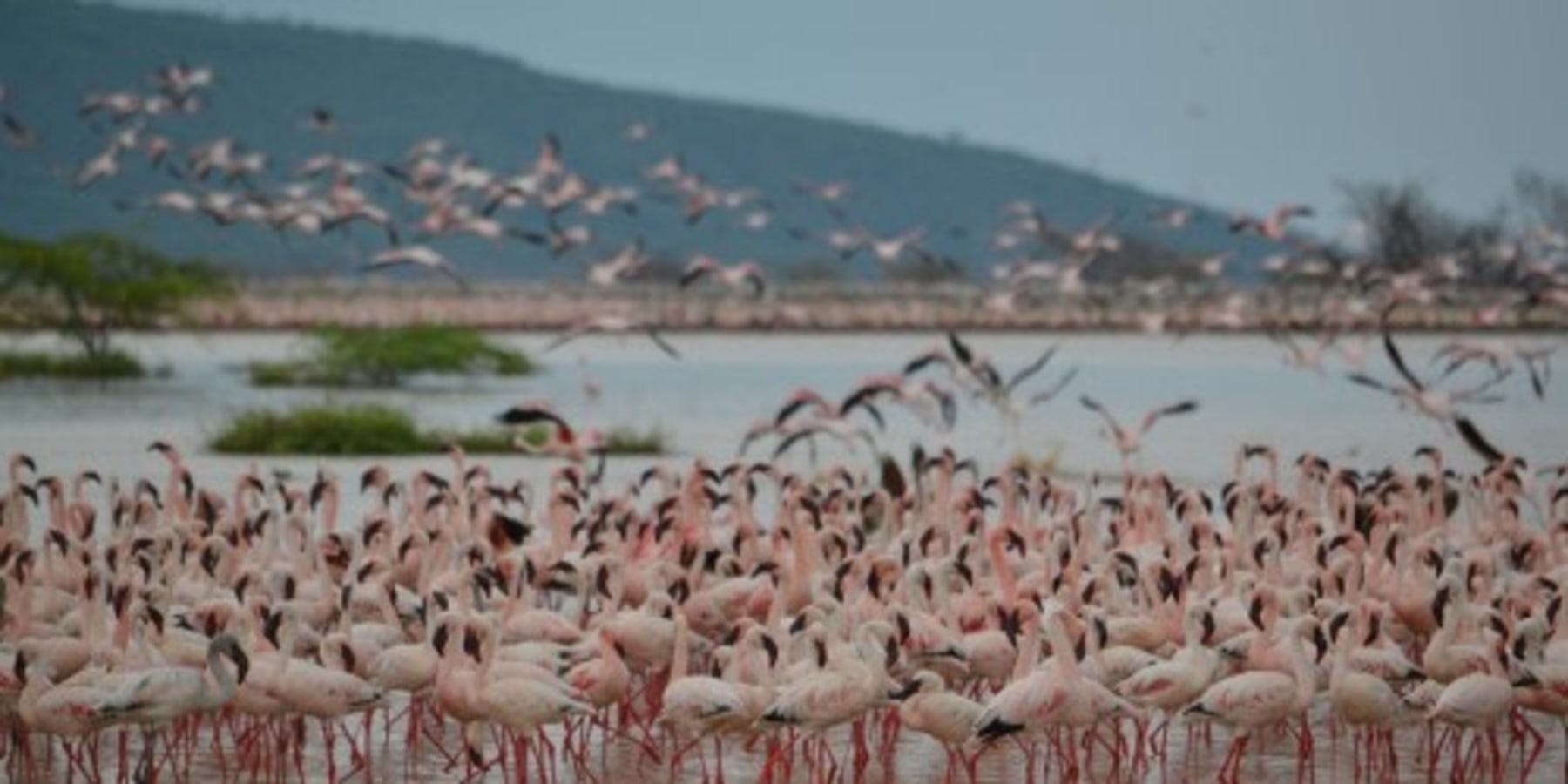
There was a time when Lake Nakuru national park was the talk of the touring world. What with more than 2 million flamingos at a single location? That was the highest concentration of a single species of birds in the world. Tourist came from around the globe to witness such unusual sights. Even the then president of the republic of Kenya, Mzee Jomo Kenyatta, was not left behind. He had constructed a shed along the shores of the lake, at the site where the largest group of the flamingos had made resident. Now the park is a pale shadow of its former glory. The birds did not die. They just moved house. They may be spread out in different locations within the lakes of the rift valley, but indeed, they still are in large group wherever they may be. Because that is what they have to do to continue staying alive.
Just before the flamingos left for their new locations, I had the chance to witness some of the rare scenes showing the effects of staying together in a group, as the flamingos do. As scavengers of the lake Nakuru, there were several clans of hyenas living around the lake.they used to clean up the shores, of dead flamingos. With such congestion of 2 million birds, there was always those who went to sleep on the dry land and never woke up to get back to the water. the hyenas were always full and gradually increased in numbers. But they could not have any visible effect on the numbers of the birds. The new breed of hyenas started having different ideas about their daily diet. They did not want to be seen as lowly scavengers cleaning up the lake shores. They wanted something fresh with warm blood. They began hunting down flamingos inside the lake. At first they tried the trick on the injured ones. Flamingos have very frail legs. Since they are wading birds, their feet are webbed. This usually forces them to land in water as shock absorbers. Those who have the bad lack of landing on the hard ground without prior experience, break their weak legs on crash-landing. These were the first to go when the new clan of hyenas started hunting for fresh meat.
The hunting expeditions were very successful in the beginning. But like in all animal life, as the hyenas learnt to hunt, the birds also were slowly learning a coping mechanism to counter the new threat. They started moving along the lake in a tighter group, leaving no space between individuals. They seemed to move like a wave. The weak ones, especially those who had broken legs were kept well hidden inside the group. When hyenas went for the hunt, they could not pinpoint accurately an individual flamingo to kill. It was as if there were no longer injured birds. So they tried to hunt the healthy ones by running right inside the group and causing a lot of chaos so that the healthy birds would fly and leave the injured ones straggling to lift up. Sometimes the hyenas were successful but most times they lost the hunt. The grouping strategy was working for the flamingos.
The general rule in the wild is a bird of a feather flocks together. There are exceptions to the rule, as to be found with some sharks, or more easily identifiable leopard. The leopard may thrive as a loner but he has very few enemies to worry about. If togetherness is primarily for safety purposes, the leopard will not need another eye to watch over him. If it is for hunting purposes, his lonesome lifestyle has given him elaborate ideas on how to successfully hunt alone. But he cannot be said to be as successful in life as hyenas or hunting dogs that live in groups and hunt together. For them, it is all for one, and one for all.
In order to work, a society must hang together. Unless the groupings are to be fluid, unreliable and anarchic, they need a defined structure. So deeply rooted are animal’s societies that if they are artificially suppressed by anything whatsoever, they soon reassert themselves and reestablish the grouping with very little effort, only driven by the sole desire to survive.

